 W
WMusic education is a field of practice in which educators are trained for careers as elementary or secondary music teachers, school or music conservatory ensemble directors. Music education is also a research area in which scholars do original research on ways of teaching and learning music. Music education scholars publish their findings in peer-reviewed journals, and teach undergraduate and graduate education students at university education or music schools, who are training to become music teachers.
 W
WPopular music pedagogy — alternatively called popular music education, rock music pedagogy, or rock music education — is a development in music education consisting of the systematic teaching and learning of popular music both inside and outside formal classroom settings. Popular music pedagogy tends to emphasize group improvisation and is more often associated with community music activities than fully institutionalized school music ensembles.
 W
WMusic appreciation is a division of musicology that is designed to teach students how to understand and describe the contexts and creative processes involved in music composition.
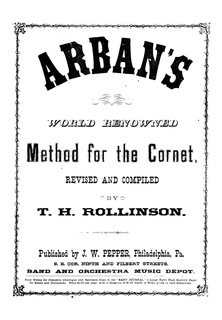 W
WThe Arban Method, titled with some variation over the years as Arban's World Renowned Method for the Cornet and Arban's Complete Celebrated Method for the Cornet, is a complete pedagogical method for students of trumpet, cornet, and other brass instruments. The original edition was published by Jean-Baptiste Arban sometime before 1859 and has been reissued by multiple publishers, with notable revisions made by T.H. Rollinson published in 1879 by J.W. Pepper, Edwin Franko Goldman published in 1893 by Carl Fischer, and Claude Gordon published in 1982 also by Carl Fischer. It contains hundreds of exercises ranging from basic to advanced compositions, with later editions also including a selection of popular themes as solos and duets by various composers, and several original compositions by Arban including his famous arrangement of Carnival of Venice.
 W
WIn music of the Renaissance and early Baroque eras, a bicinium was a composition for only two parts, especially one for the purpose of teaching counterpoint or singing.
 W
WThe Concert Companion was a hand-held device intended to enhance concert experiences by presenting information that complements the music while the music is being performed. Using wireless technology, the Concert Companion delivered explanatory text, program notes and video images in real time with the music. The Concert Companion was developed under the auspices of the Kansas City Symphony by former executive director Roland Valliere.
 W
WThe Doctor of Musical Arts (DMA) is a doctoral academic degree in music. The DMA combines advanced studies in an applied area of specialization with graduate-level academic study in subjects such as music history, music theory, or music pedagogy. The DMA degree usually takes about three to four years of full-time study to complete, preparing students to be professional performers, conductors, and composers. As a terminal degree, the DMA qualifies its recipient to work in university, college, and conservatory teaching/research positions. Students seeking doctoral training in musicology or music theory typically enter a Ph.D. program, rather than a DMA program.
 W
WEducational music, is a genre of music in which songs, lyrics, or other musical elements are used as a method of teaching and/or learning. It has been shown in research to promote learning. Additionally, music study in general has been shown to improve academic performance of students.
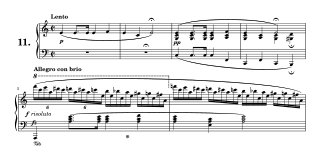 W
WAn étude or study is an instrumental musical composition, usually short, designed to provide practice material for perfecting a particular musical skill. The tradition of writing études emerged in the early 19th century with the rapidly growing popularity of the piano. Of the vast number of études from that era some are still used as teaching material, and a few, by major composers such as Frédéric Chopin, Franz Liszt and Claude Debussy, achieved a place in today's concert repertory. Études written in the 20th century include those related to traditional ones and those that require wholly unorthodox technique.
 W
WA flute circle is an organization of musicians which focuses on the Native American flute. Flute circles typically meet periodically to engage in educational and recreational activities surrounding the instrument. Most flute circles offer instruction on the Native American flute, especially for flutists who are new to the instrument. Many flute circles have a facilitator with experience in group music facilitation and humanistic music education to structure the activities and the music-making.
 W
WIn music, a Flute method is a kind of specific textbook style manual for playing the flute. It usually contains fingering charts and/or scales and numerous different exercises, sometimes also simple etudes, in different keys, in ascending order as to difficulty or with a focus on isolated aspects like fluency, rhythm, dynamics, articulation and the like. Sometimes there are duets or even recital pieces, also with accompaniment. Such methods differ from etude books in that they are meant as a linear course for a student to follow, with consistent guidance, whereas volumes of etudes are not as comprehensive.
 W
WA master class is a class given to students of a particular discipline by an expert of that discipline; usually music, but also science, painting, drama, games, or on any other occasion where skills are being developed.
 W
WThe Master of Music is, as an academic title, the first graduate degree in music awarded by universities and conservatories. The M.M. combines advanced studies in an applied area of specialization with graduate-level academic study in subjects such as music history, music theory, or music pedagogy. The degree, which takes one or two years of full-time study to complete, prepares students to be professional performers, conductors, and composers, according to their area of specialization. The M.M. is often required as the minimum teaching credential for university, college, and conservatory instrumental or vocal teaching positions.
 W
WMusic education is a field of practice in which educators are trained for careers as elementary or secondary music teachers, school or music conservatory ensemble directors. Music education is also a research area in which scholars do original research on ways of teaching and learning music. Music education scholars publish their findings in peer-reviewed journals, and teach undergraduate and graduate education students at university education or music schools, who are training to become music teachers.
 W
WMusic education for young children is an educational program introducing children in a playful manner to singing, speech, music, motion and organology. It is a subarea of music education.
 W
WMusic lessons are a type of formal instruction in playing a musical instrument or singing. Typically, a student taking music lessons meets a music teacher for one-to-one training sessions ranging from 30 minutes to one hour in length over a period of weeks or years. Depending on lessons to be taught, students learn different skills relevant to the instruments used. Music teachers also assign technical exercises, musical pieces, and other activities to help the students improve their musical skills. While most music lessons are one-on-one (private), some teachers also teach groups of two to four students, and, for very basic instruction, some instruments are taught in large group lessons, such as piano and acoustic guitar. Since the widespread availability of high speed. low latency Internet, private lessons can also take place through live video chat using webcams, microphones and videotelephony online.
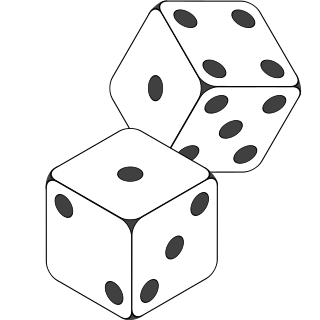 W
WA Musikalisches Würfelspiel was a system for using dice to randomly generate music from precomposed options. These games were quite popular throughout Western Europe in the 18th century. Several different games were devised, some that did not require dice, but merely choosing a random number.
 W
WOrgelkids is an educational project meant to familiarize and educate children with the pipe organ musical instrument. The project was initiated in the Netherlands in 2009 by Lydia Vroegindeweij and is directed towards cultural legacy and music education. Initially the project consisted of a website with educational tips and lesson suggestions to organize, among other projects, an excursion to a large pipe organ. Since 2013, Orgelkids has at its disposal a specially developed educational organ assembly kit. A complete, craftsman-built organ, in unassembled component parts, is contained in a lesson box. The instrument can be assembled and subsequently played. This so-called Do-organ is rented out by Orgelkids to organists, organ builders or organ teachers who want to organize educational projects for children.
 W
WPiano pedagogy is the study of the teaching of piano playing. Whereas the professional field of music education pertains to the teaching of music in school classrooms or group settings, piano pedagogy focuses on the teaching of musical skills to individual piano students. This is often done via private or semiprivate instructions, commonly referred to as piano lessons. The practitioners of piano pedagogy are called piano pedagogues, or simply, piano teachers.
 W
WRealization is the art of creating music, typically an accompaniment, from a figured bass, whether by improvisation in real time, or as a detained exercise in writing. It is most commonly associated with Baroque music.
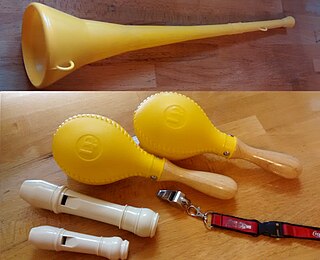 W
WThe rhythm band is one of the primary methods of introducing children to playing music. Children are given maracas, tambourines, bells, rhythm sticks and other idiophones with which to beat out a simple rhythm while the teacher plays a song, usually on the piano. Alternatively, the teacher does not play a melody but also a rhythm instrument, so that only rhythms are played. Children can also make a rhythm band "just for fun" for themselves, without a teacher. Rhythm bands are usually found in nursery schools or kindergartens, but of course children also can make a rhythm band at home. Melodic instruments are introduced to the children in the first or second year of regular school. But in principle, a rhythm band can be made in every age, with more difficult rhythms if the participants are older. If the participants like very loud music, noisemakers like the pea whistle, the recorder head joint, the vuvuzela or the ratchet can be included into the rhythm band, as well as other very loud rhythm instruments like the snare drum.
 W
WA music school is an educational institution specialized in the study, training, and research of music. Such an institution can also be known as a school of music, music academy, music faculty, college of music, music department, conservatory, conservatorium or conservatoire. Instruction consists of training in the performance of musical instruments, singing, musical composition, conducting, musicianship, as well as academic and research fields such as musicology, music history and music theory.
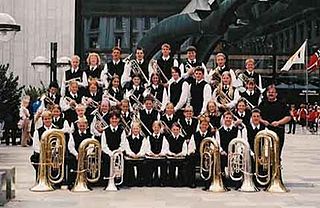 W
WA school band is a group of student musicians who rehearse and perform instrumental music together. A concert band is usually under the direction of one or more conductors. A school band consists of woodwind instruments, brass instruments and percussion instruments, although upper level bands may also have string basses or bass guitar.
 W
WThe Suzuki method is a music curriculum and teaching philosophy dating from the mid-20th century, created by Japanese violinist and pedagogue Shinichi Suzuki (1898–1998). The method aims to create an environment for learning music which parallels the linguistic environment of acquiring a native language. Suzuki believed that this environment would also help to foster good moral character.
 W
W"Who Stole the Cookie from the Cookie Jar?" or the cookie jar song is a sing-along game of children's music. The song is an infinite-loop motif, where each verse directly feeds into the next. The game begins with the children sitting or standing, arranged in an inward-facing circle.
 W
WWomen in music education describes the role of women musicians, conductors, teachers and educational administrators in music education at the elementary school and secondary education levels. While music critics argued in the 1880s that "...women lacked the innate creativity to compose good music" due to "biological predisposition", later, it was accepted that women would have a role in music education, and they became involved in this field "...to such a degree that women dominated music education during the later half of the 19th century and well into the 20th century." "Traditional accounts of the history of music education [in the US] have often neglected the contributions of women, because these texts have emphasized bands and the top leaders in hierarchical music organizations." When looking beyond these bandleaders and top leaders, women had many music education roles in the "...home, community, churches, public schools, and teacher-training institutions" and "...as writers, patrons, and through their volunteer work in organizations."